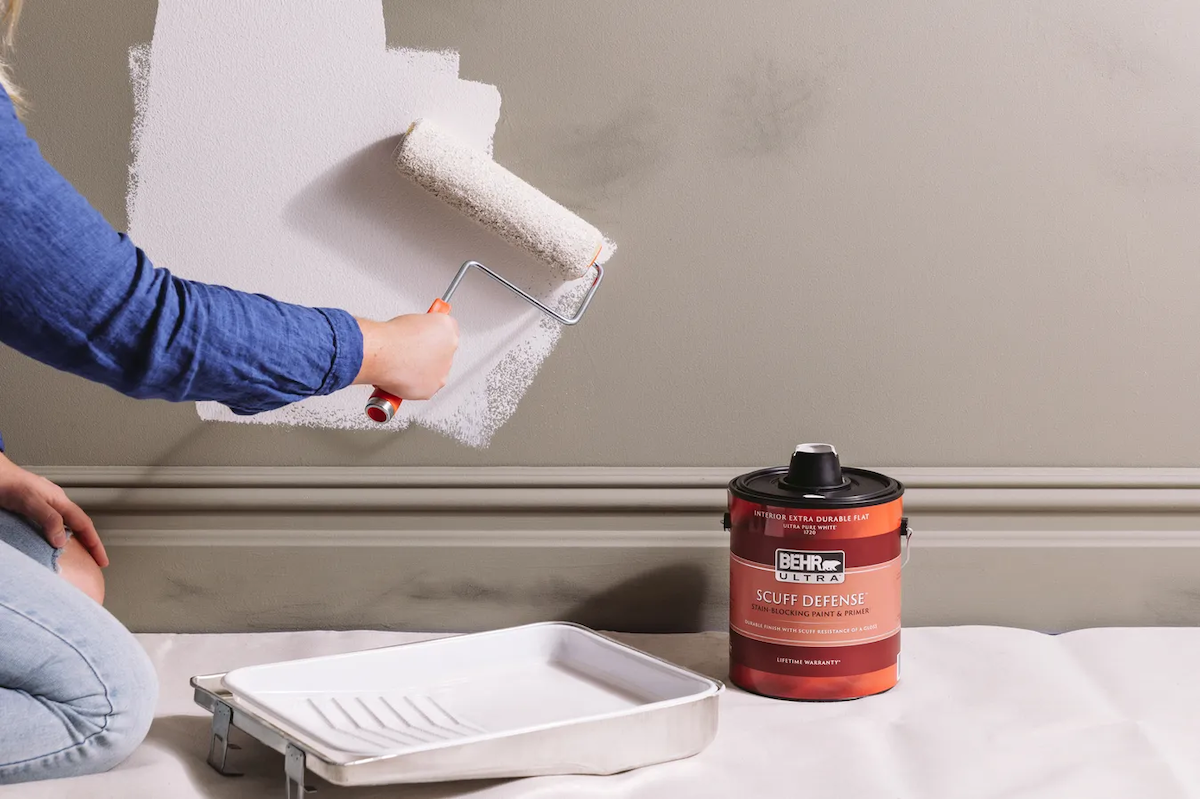If you came here to say, "Um, absolutely not — wallpaper should not be painted over," I hear you.
Should you really paint over wallpaper? Probably not. But here's the thing — we all do projects in our homes that we probably shouldn't. Sometimes it's a temporary fix before a larger renovation, sometimes we just use what we have on hand, and sometimes it's because we just don't have the skills yet to do things by the book. Not to mention that wallpaper is notoriously difficult to remove correctly, and the chances that the wall will be damaged underneath are pretty high. Painting over wallpaper will never look as good as painting a fresh wall, but you knew that, right?
So . . . will some people shudder at the idea of painting over wallpaper? Yep. But the good news is, it's your home, and you can do with it what you will. Now, that said, there are some dos and don'ts for painting wallpaper, as well as methods that set you up for better success, which we'll get into below.
When you really shouldn't paint wallpaper
Again, you're free to do whatever you please, but there are times when removing wallpaper is actually much easier than painting over it. Vinyl wallpaper, for one, is usually the peel-and-stick variety, which is made to be removed once your love of trailing vines or little forest animals eventually fades. In this case, you'll certainly want to remove the wallpaper before you paint, because paint won't stick well to vinyl, and it's likely to peel up in places at some point anyway.
If your wallpaper is peeling up in places already, you might want to take this as a sign that it should be totally removed and not painted over. After all, the energy spent on sticking those spots back down just to paint over them is probably better spent removing it entirely. If these don't apply to you and you're still bent on painting over that paper? Let's do it.
Clean the walls, and clean 'em good
Just as with any paint project, you'll want to remove as much dust and grease from the walls as possible, to get the paint the best chance to stick. We wouldn't recommend soaking the walls (because then the paper will likely lift off), but give them a wipe with a degreasing solution and a microfiber cloth. Let them dry completely, fully, 100 percent before moving forward. For real!
Patch and repair rips
As previously noted, if the paper is more damaged and peeled up than not, you should go forth with removing it, but if there are only a few problem areas, they're luckily easy to tackle. You can either paste the paper back down with wallpaper adhesive, or tear off the damaged parts, spackle, and sand the area.
Use an oil-based primer
If you're going to take one thing away from this — let it be to use an oil-based primer. Water-based primers are all well and good for regular walls, but they can soak through the paper and loosen the adhesive, rendering your best wallpaper-cover-up efforts futile. The oil-based primer will effectively lock the paper in and give you the best chance for success when it comes time for the desired color.
Paint, paint, paint
You made it! Paint is the final step in, well, painting your wallpaper. The prep work is certainly the hardest (and most tedious part) so now all that's left to do is paint over the paper you likely loathe and say goodbye.




Shares